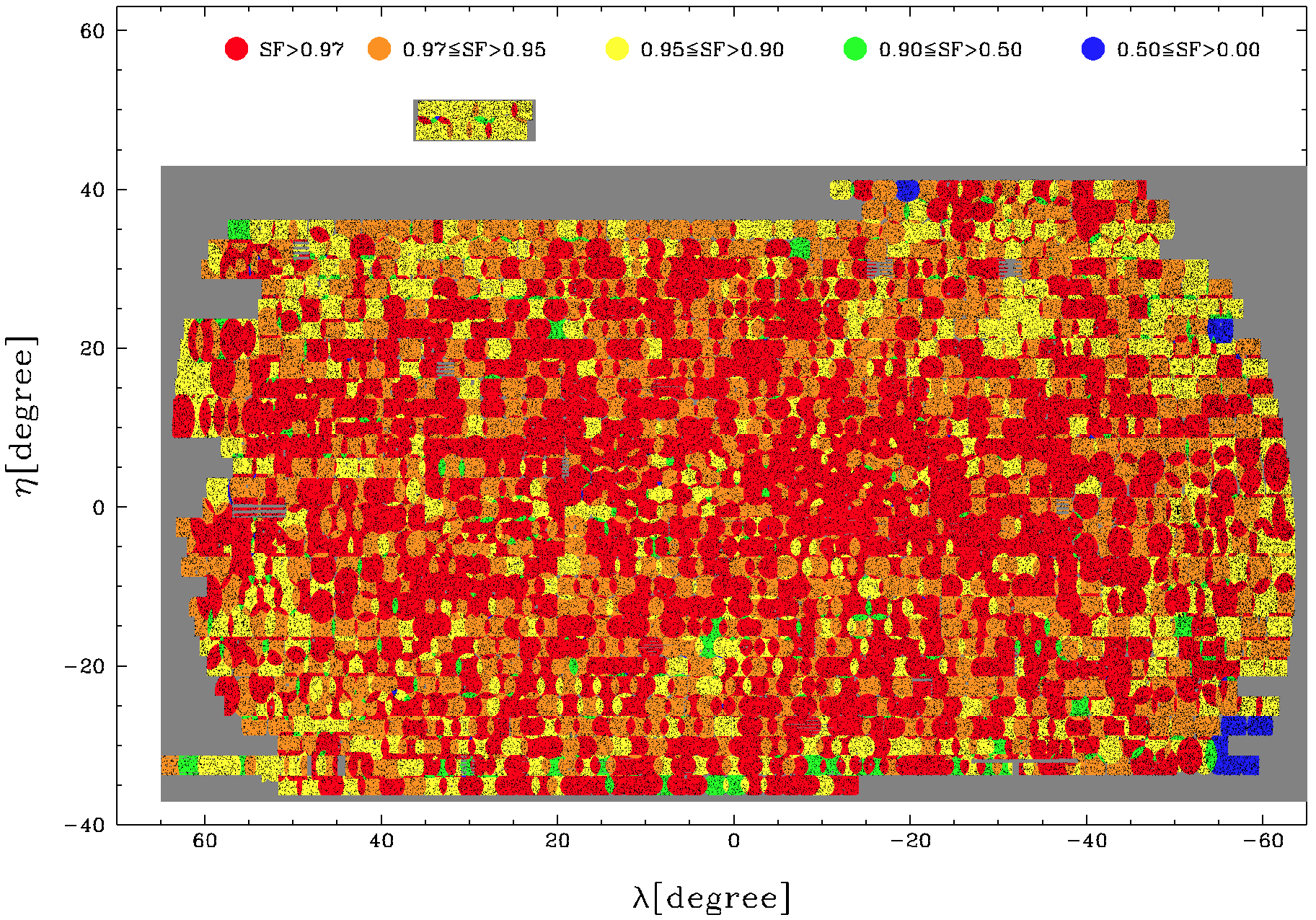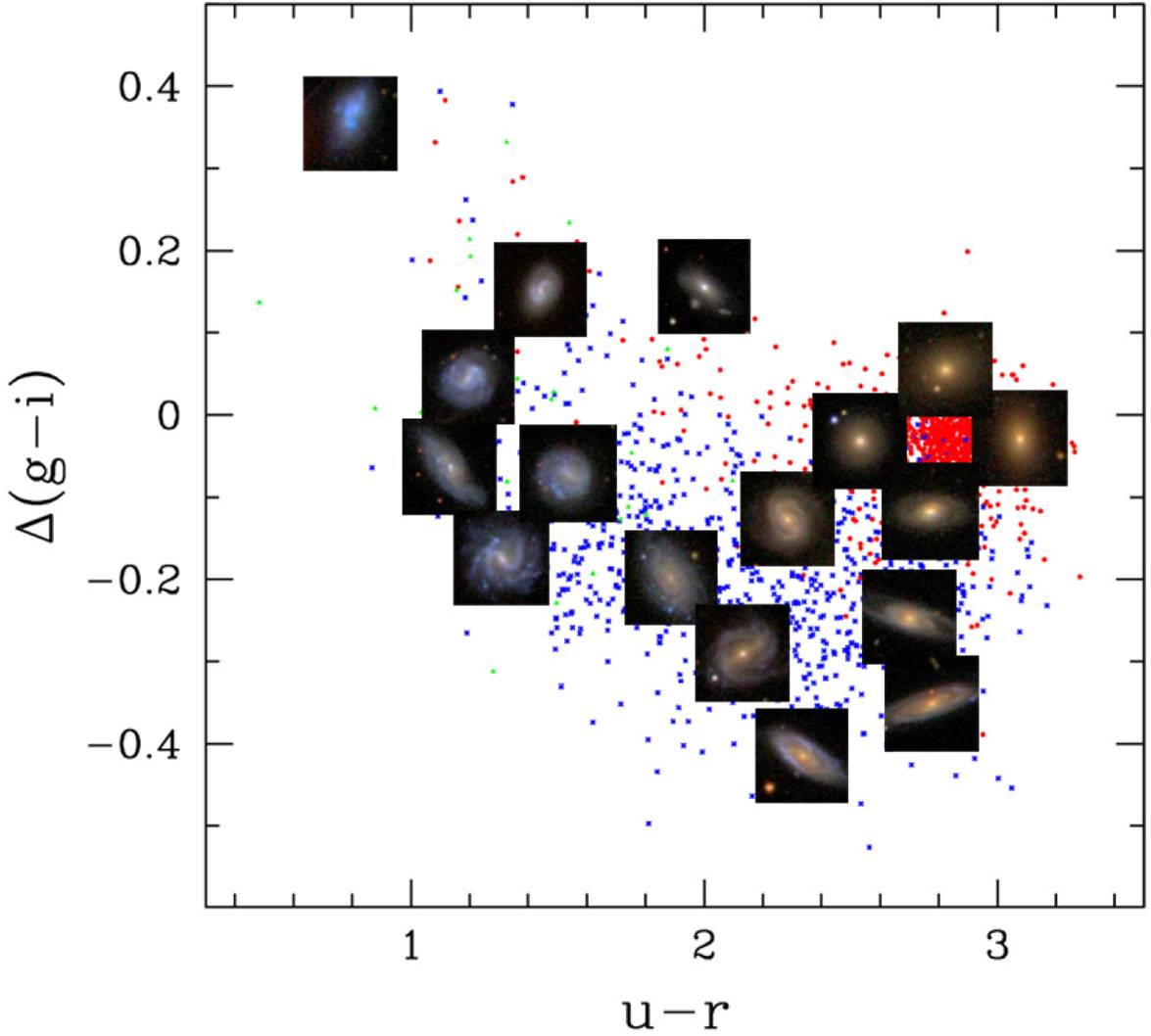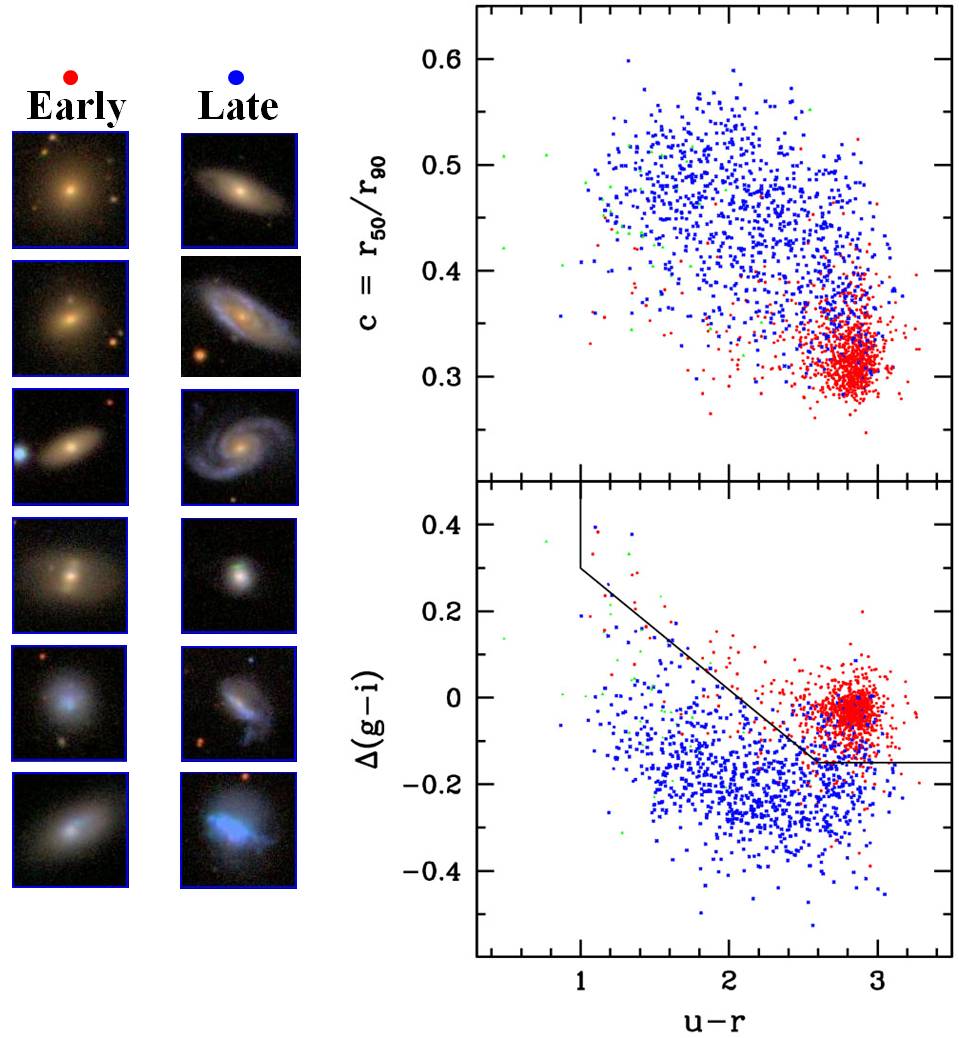Korea
Institute for Advanced Study Value-Added Galaxy Catalog
We present the Korea Institute for Advanced Study
Value-Added
Galaxy Catalog, a catalog of Main galaxies based on the New York
University Value-Added Galaxy Catalog Data Release 7 (NYU VAGC;
Blanton et al. 2005). The catalog supplements redshifts
not in the Large
Scale Structure (LSS) sample (brvoid0)
in
the NYU VAGC from other existing galaxy redshift catalogs such as the
Updated Zwicky Catalog, the IRAS Point
Source Catalog Redshift Survey, the Third Reference Catalogue of
Bright Galaxies, and the Two Degree Field Galaxy Redshift Survey.
The catalog also provides morphological type and related parameters
which are measured by an automated morphology classification scheme of
Park & Choi (2005), together with fundamental photometry parameters
supplied by the NYU VAGC and zero-indexed position in data of Max Planck for
Astronomy (MPA) & Johns Hopkins University (JHU) Data Release 7
to match to their spectraum measurements. Therefore, the KIAS VAGC is
complementary to the NYU VAGC and MPA-JHU catalog.

This catalog is described in a paper pusblished in Journal of the Korean
Astronomical Society.
Citations
Please cite this paper for users of the KIAS VAGC and acknowledge the
use of SDSS data and NYU-VAGC, in your publications.
Contact Please
contact Yun-Young Choi with comments or questions.
Better Spectroscopic Completeness
The KIAS VAGC contains 593,514 redshifts of the SDSS Main
galaxies in r-band Petrosian magnitude
range of 10<rP<17.6. We excluded 929 objects in the
LSS Sample
(583,946 galaxies) that are in error (e.g. badly deblended by automated
photometric
pipeline, blank fields, or stars, and so on) and added redshifts of
10,497 galaxies with 10 < rP<17.6 (1,455 with
10<rP<14.5) not in the brvoid0 LSS
Sample whose selection criterion is found here.
The
data of angular selection function includes a fraction of targets
which successfully get redshifts in a sector for all the
sectors. This file also describes the geometry of the sample and
bright star mask.
Angular selection function for main area before the supplementation

Angular selection function for main area after the supplementation

Angular selection function for the three southern stripes before the supplementation

Angular selection function for the three southern stripes after the supplementation

Figure The angular selection
function of the NYU VAGC LSS catalog is displayed in the upper panel
and one after supplementation of 10,497 galaxies in the lower panel.
After the supplementation, the main area with the angular selection function
greater than 0.97 increases from 39.8% to 54.3% of the area with the
selection function greater than 0. The area in black denotes bright
star mask.
Successful Morphology
Classification
Our catalog includes the morphological information of all
the galaxies. We use the automated classification scheme developed by
Park & Choi (2005) using u-r color, Δ(g-i) color
gradient, and the inverse concentration index cin
measured
from
Atlas images of all the galaxies in our KIAS VAGC. Reliability and
completeness of this classification reach about 90%.
To improve the automated classification results, we performed visual
inspection together with thirteen astronomers on the selected
83,292 galaxies that are located in the ``trouble zones'' where the
reliability of the automated classification is low. These are the
galaxies having neighbors at very small separations (for these cin
is
inaccurate) or those classified as blue early types or red late types.
As a result, the morphology of 7% of the inspected galaxies is changed
and some spurious objects are removed.


The
data of morphology classification includes redshift and morphology related
parameters we measured, together with the other fundamental photometric
parameters of the NYU-VAGC.
The morphology information given by the scheme has been used in the
several studies on the relation between galaxy properties and the
environment (Choi et al. 2007; Park et al. 2007; Lee et al. 2008, 2010;
Park, Gott, & Choi 2008; Park & Choi 2009; Park & Hwang
2009; Choi, Woo, & Park 2010; Lee et al. 2010; Han et al. 2010) and
the topology of large scale structure (Choi et al. 2010; Zhang,
Springel, & Yang 2010).
Auxiliary catalog
The KIAS VAGC also provides a
file containing information to uniquely identify an spectroscopic
observation.
The
data of SDSS spectral information is given in a format of ASCII.
Acknowledgments
We acknowledge the NYU VAGC team and the thirteen astronomers
who joined the eyeball inspection of the galaxy morphology (Changbom
Park, Pravabati Chingangbam, Ho Seong Hwang, Young-Rae Kim, Pascale
Hibon, Graziano Rossi, Hong-Bae Ann and his students, Kwang Ho Lee,
Hyunbae Park, Do-Gyun Kim, and Danny Pan).
Funding for the SDSS and SDSS-II has been provided by the Alfred P.
Sloan Foundation, the Participating Institutions, the National Science
Foundation, the U.S. Department of Energy, the National Aeronautics and
Space Administration, the Japanese Monbukagakusho, the Max Planck
Society, and the Higher Education Funding Council for England.
The SDSS Web Site is http://www.sdss.org/.
The SDSS is managed by the Astrophysical Research Consortium for the
Participating Institutions. The Participating Institutions are the
American Museum of Natural History, Astrophysical Institute Potsdam,
University of Basel, Cambridge University, Case Western Reserve
University, University of Chicago, Drexel University, Fermilab, the
Institute for Advanced Study, the Japan Participation Group, Johns
Hopkins University, the Joint Institute for Nuclear Astrophysics, the
Kavli Institute for Particle Astrophysics and Cosmology, the Korean
Scientist Group, the Chinese Academy of Sciences (LAMOST), Los Alamos
National Laboratory, the Max-Planck-Institute for Astronomy (MPIA), the
Max-Planck-Institute for Astrophysics (MPA), New Mexico State
University, Ohio State University, University of Pittsburgh, University
of Portsmouth, Princeton University, the United States Naval
Observatory, and the University of Washington.






